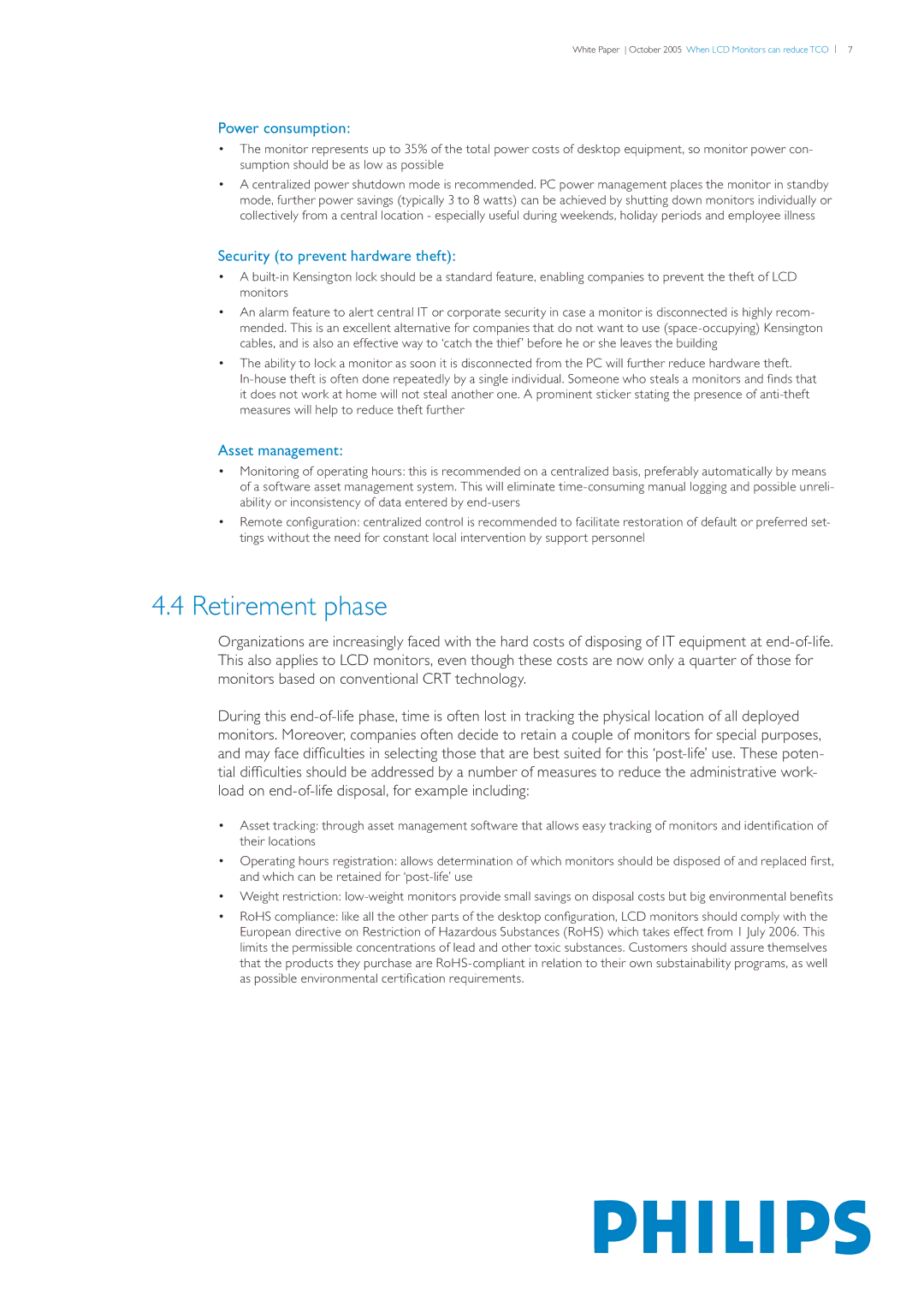White Paper October 2005 When LCD Monitors can reduce TCO 7
Power consumption:
•The monitor represents up to 35% of the total power costs of desktop equipment, so monitor power con- sumption should be as low as possible
•A centralized power shutdown mode is recommended. PC power management places the monitor in standby mode, further power savings (typically 3 to 8 watts) can be achieved by shutting down monitors individually or collectively from a central location - especially useful during weekends, holiday periods and employee illness
Security (to prevent hardware theft):
•A
•An alarm feature to alert central IT or corporate security in case a monitor is disconnected is highly recom- mended. This is an excellent alternative for companies that do not want to use
•The ability to lock a monitor as soon it is disconnected from the PC will further reduce hardware theft.
Asset management:
•Monitoring of operating hours: this is recommended on a centralized basis, preferably automatically by means of a software asset management system. This will eliminate
•Remote configuration: centralized control is recommended to facilitate restoration of default or preferred set- tings without the need for constant local intervention by support personnel
4.4Retirement phase
Organizations are increasingly faced with the hard costs of disposing of IT equipment at
During this
•Asset tracking: through asset management software that allows easy tracking of monitors and identification of their locations
•Operating hours registration: allows determination of which monitors should be disposed of and replaced first, and which can be retained for
•Weight restriction:
•RoHS compliance: like all the other parts of the desktop configuration, LCD monitors should comply with the European directive on Restriction of Hazardous Substances (RoHS) which takes effect from 1 July 2006. This limits the permissible concentrations of lead and other toxic substances. Customers should assure themselves that the products they purchase are
